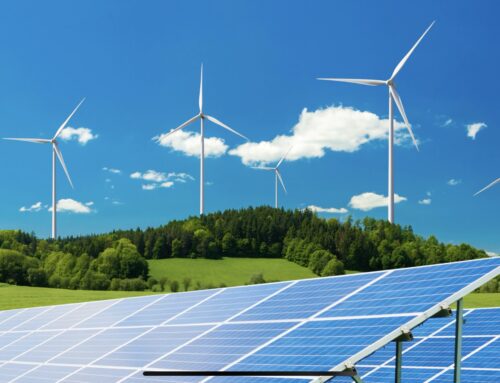Introduction: BioLPG market rapidly expanding
As the energy transition accelerates, there is increasing momentum towards decarbonisation, including for low-carbon and clean-burning fuels such as LPG. But there are questions regarding the decarbonisation of certain sectors, such as petrochemicals, and the need to provide sustainable off-grid heating solutions. The answers to these will prove essential in maintaining living standards across large parts of the globe during the changes to our energy systems, and in ensuring we meet the needs of the ‘Just Transition’ framework.
BioLPG is an increasingly attractive alternative biofuel and is now considered a promising route to directly decarbonising parts of the transport, residential, industrial and petrochemical sectors. By producing propane and butane from organic or waste feedstocks, typically also used to produce other biofuels, carbon emissions reductions of up to 90pc can be achieved.
With chemical composition identical to that of conventional LPG, bioLPG can be used in identical applications and blended with the fossil-based fuel in hybrid solutions. It is a ‘drop-in’ fuel, meaning it can be ‘dropped-in’ to the existing LPG supply and use the same infrastructure to be delivered to the customer. This makes it highly desirable for distributors and end-users as it does not require further investment along the supply chain.
The bioLPG market is – at present – limited. At the end of 2021, Argus estimates that 200,000 t/yr of bioLPG was being produced from hydroprocessing and small additional volumes came from converting bioethanol. The conventional LPG market by comparison is approximately 330mn t/yr – and continues to grow. However, output of bioLPG is expected to grow more than treble between 2020 and 2025, based on announced projects. If the market maintains this rate of growth, it will expand to over 2.2mn t/yr by 2030. As this growth is realised through just the hydrotreated vegetable oil (HVO) pathway (discussed in the next section), the development of other technologies to produce bioLPG provide upside to this forecast. Each of these pathways differs in yield, commercial proposition, time to market, and feedstock requirements.
Production pathways
A key question facing the bioLPG market is how to produce the product, and multiple pathways are under development. Producers need to weigh up a number of critical factors, including:
- Feedstock availability for each process
- Required research and development investment and time to market
- Efficiency of the commercialised technology
At present, nearly all bioLPG is a by-product of hydroprocessing vegetable and waste-based oil feedstocks to make hydrotreated vegetable oil (HVO) and sustainable aviation fuel (SAF). The bioLPG yield from this process is typically between 3pc and 10pc. This pathway, along with a number of others under development, are detailed in the infographic on p2, which illustrates the links between feedstocks and synthetic steps.
The feedstock required for a given production pathway is critical to its business rationale, impacting process viability, operating costs, and the breakeven price of the investments.
Feedstock options include:
- Vegetable and waste processing oils – This is the term used to refer to a wide range of vegetable and waste-based oil feedstocks, which may undergo hydrotreatment to produce HVO, sustainable aviation fuel (SAF) and lighter hydrocarbons, or transesterification to produce FAME biodiesel. First-generation bio-oils, such as soy and palm oil, are now being phased out across Europe in response to indirect land-use change concerns, and this is having a large impact on feedstock availability for biofuels. Secondgeneration waste-based bio-oils, such as used cooking oil (UCO) and animal fats, have increased their share of the biofuel feedstock mix as a result of policy incentives
- Biogas – Produced through the anaerobic digestion of biomass, biogas may undergo reformation followed by further synthesis to produce bioLPG. The reformation process produces the gaseous mixture known as syngas, which can then follow routes including Fischer-Tropsch synthesis and conversion via biomethanol or bioethanol
- Cellulosic waste – This consists of biomass from sources such as crop residue or wood residue, which is inherently uniform and requires little sorting and purification. Both cellulosic waste and municipal solid waste offer proven pathways to bioLPG through gasification and pyrolysis, which share feedstocks but differ in conditions and yields. Gasification and pyrolysis occur via syngas and py-oil intermediates respectively, which can then be converted to syngas. The syngas can be put into a Fischer-Tropsch unit to produce renewable fuels including bioLPG. Despite their uniformity, challenges with cellulosic wastes arise with developing collection and distribution infrastructure.
- Municipal solid waste (MSW) – Consisting of all residential, commercial, and industrial waste from municipal sites, MSW is an abundant gasification and pyrolysis feedstock that can be used to produce bioLPG, as well as other biofuels and recycled carbon fuels. China’s recent ban on MSW imports has meant higher supplies elsewhere. Even considering additional purification requirements, its abundance makes it an attractive feedstock option
- Green hydrogen and carbon dioxide – Utilised through the ‘power-to-X’ process, these feedstocks can be used to produce a range of liquid renewable fuels, including renewable LPG (or E-LPG). The largest barrier to this technology is its cost, specifically the cost of power consumption and green hydrogen production
Each of these feedstock options and their associated production routes represent an opportunity, but each also comes with challenges. As the bioLPG market evolves, a number of these processes could move towards commercial-scale production. This will necessitate detailed analysis of processing stages, collection and distribution infrastructure, economic margins, and cost barriers at the commercial scale.
rDME: Complementary fuel
As the LPG industry, and our global energy systems more broadly, move towards decarbonisation at increasing speed, the need for a multi-faceted approach to alternative fuels is becoming more apparent. So far, bioLPG has benefited from its production linkages to the larger HVO and SAF markets, which are of great interest to a number of parties able to invest significant sums in additional supply. Renewable dimethyl ether (rDME) has become an increasing focus of research and development as a potential answer to the LPG industry’s challenge. The DME molecule has been produced from fossil fuels such as coal and natural gas for years. It is used in relatively small quantities —the International DME Association estimates the market size at 9mn t/yr — as an LPG blending agent, aerosol propellant and solvent. Interest in these applications has continued to grow, particularly in relation to LPG markets, following the development of DME in a renewable form. In Europe, the first rDME demonstration plant was commissioned in Sweden, while in California Oberon has shaped the North American landscape for the fuel. There is also a joint venture between SHV Energy and UGI International that aims to expand production.
Chemically, the molecule is similar to propane, differing only by the replacement of propane’s central carbon atom with an oxygen atom. The result is a product with comparable physical properties. As such, the two fuels liquidate under similar conditions, so can be stored and transported using the same infrastructure, and also used in many of the same ways. At present, the rDME market is limited, with California’s Oberon producing at a rate of about 18,500 t/yr at the end of 2021. Suburban Propane, one of the US’ largest LPG distributors, has invested in Oberon and is selling rDME blended into propane. SHV and peer UGI International recently formed the Dimeta joint venture to develop six rDME production plants with a combined capacity of 300,000 t/yr across Europe and the US by 2027. The first of these 50,000 t/yr facilities will be built in the Teesworks freeport in northeast England by 2024. Argus has published a number of articles about the development of the rDME market in Argus LPG World and will be publishing a detailed white paper on rDME before the end of 2022.
Policy driving bioLPG market forward
Broad political support for biofuels such as biodiesel and SAF has helped promote bioLPG, which is produced alongside these in the hydroprocessing route. There are far fewer measures aimed specifically at promoting bioLPG, but there is a major effort to raise the profile of bioLPG in many counties with strong LPG associations.
Europe
As the most advanced biofuels market, Europe continues to incentivise production of biofuels to meet ambitious targets, defined most recently in the Renewable Energy Directive’s Fit for 55 update. This aims to align policies with the EU’s 55pc emissions reduction target by 2030 and 40pc target share for renewable fuels in the final consumption mix. The EU has proposed that the share of SAF in the volume of aviation fuel sold in the EU increase from 2pc in 2025 to over 60pc by 2050. This has incentivised high levels of investment in HVO and SAF, with higher levels of bioLPG production as a by-product. Recently, the European Parliament called for even higher SAF requirements by 2050 and a final legal text is expected in coming months. The FuelEU Maritime proposal has called for a reduction in GHG emissions from marine shipping, which may also incentivise LPG/bioLPG as lower carbon marine fuels.
The production of bioLPG from waste-based feedstocks currently makes the biofuel eligible for double-counting policies, meaning it receives double renewable energy units in the relevant European country. The EU’s revised RED II proposes phasing out this policy, although the matter is still under discussion at EU level.
In June 2022, EU energy ministers reached agreement on revisions to the bloc’s 2018 Renewable Energy Directive (RED) II, a forthcoming recast know as RED III. The whole parliament will vote on the proposals in September 2022, with implementation expected by the end of 2024.
In the UK specifically, bioLPG is recognised under the Renewable Transport Fuel Obligation (RTFO) scheme as eligible for Renewable Transport Fuel Credits (RTFCs), as well as double counting for waste-derived bioLPG. Despite the UK’s recent ban on gas boiler installations and its promotion of heat pumps, the government recognises that there may be a role for biofuels such as bioLPG in off-grid properties. Many of these properties are currently heated with oil and the cost of installing a heat pump can be prohibitive. The government’s strategy for offgrid heating is expected to be published before the end of the year.
North America
The US’ Renewable Fuel Standard (RFS) is adaptable and recognises biofuels as eligible for Renewable Identification Numbers (RINs). A number of bioLPG-producing projects have already been ruled to qualify by the Environmental Protection Agency and further updates are likely to expand on these. At present, bioLPG produced from these projects is predominantly used as a biorefinery process fuel, as well as in the transport and residential sectors. In the former case, the bioLPG is not extracted as a marketable product, such as that produced at Diamond Green Diesel’s Louisiana plant. This is generally because extracting the bioLPG will require some additional expense, with the biorefinery also required to buy in other fuel sources, such as natural gas.
The federal government has announced a goal to increase production of SAF to 3bn gallons/yr (9mn t/yr) by 2030. The recently passed Inflation Reduction Act included a mix of tax credits and project funding to support this goal. The adaptability of US policy is demonstrated through Oberon’s development of comparable fuel renewable dimethyl ether (rDME). Incentives from the Californian government and recognition at national level have underpinned the commissioning of Oberon’s first commercial plant, which started up in 2021.
Asia
Asia is the key region for LPG consumption, boasting large residential and petrochemical sectors. Asia’s biofuel landscape is also developing rapidly. For example:
- South Korea has a well-established emissions trading system (ETS,) which now applies to the petrochemical sector. As a result, LG Chem has now begun to utilise bionaphtha in its Yeosu cracker and is investing in the ability to produce bioplastics from feedstocks such as bionaphtha and corn
- South Korean refiner Hyundai Oilbank and airline Korean Air have agreed to explore the manufacture and use of sustainable aviation fuel (SAF)
- Singapore Airlines has announced it will use SAF from the second half of 2022. Shell and ExxonMobil are investing to supply this market
- Japan’s Ministry of Land, Infrastructure, Transport and Tourism Civil Aviation Bureau forecasts Japanese airports will use 10.9bn-12.3bn litres (9-10mn t/yr) of jet fuel by 2030, of which 2.5bn-5.6bn litres should be SAF, in line with the Carbon Offsetting and Reduction Scheme for International Aviation of the International Civil Aviation Organisation
- Japan Airlines has said it will start using SAF on flights leaving San Francisco from 2024 and other US west coast airports from 2027
- China’s ETS currently applies to power generation only, but expansions to the scheme have been under discussion
Across global LPG markets, increasing carbon prices and taxation will drive the profitability of competing biofuels. BioLPG is well-positioned to capitalise on these changes if appropriately recognised in legislation updates, presenting direct decarbonisation solutions to the petrochemical, on and off-grid residential heating and industrial sectors, among others.
Sustained market growth
Commercial bioLPG volumes produced in the hydrotreatment process have seen consistent double-digit growth over the past five years, and the market size was around 200,000 t/yr at the end of 2021. Volumes are forecast to rise to just under 245,000 t/yr by the end of 2022. These volumes are largely marketed across Europe and have arisen from an increasing number of refinery conversions and Greenfield biofuels projects.
Major energy companies, including Neste, Preem, Eni, and TotalEnergies operate these facilities. The largest of these are operated by Neste in Singapore and Rotterdam, capable of producing up to 54,000 t/yr and 40,000 t/yr of bioLPG respectively. In 2022, further capacity has been added in Europe, Asia, and the US.
In addition, the last 18 months have seen the development of bioLPG pathways beyond hydrotreatment. There have been commercial successes in converting bioethanol into bioLPG, with Polish producer Ekobenz, beginning shipments in June 2021. Ekobenz can produce 22,000 t/yr of advanced biofuel, which includes a proportion of bio-LPG. Meanwhile, production from green hydrogen and carbon dioxide — the ‘powerto-X’ — process, is being developed in multiple projects, with one planning to start production in late 2022.
The growth trajectory of bioLPG markets and number of planned projects to be commissioned in the near future poses the question of timing for potential producers. As bioLPG output matures, producers will look to enter the market once extracting bioLPG as a by-product or investing in new production technologies is profitable. While its inherent nature as a by-product goes some way to incentivising these investments, the rate of cost decline, policy value drivers, and the efficiency of new production technologies are key factors. Argus continues to assess a number of projects presenting new technologies and driving down these costs, including:
- Commitments to expanding the SAF market from Sky NRG, Tupras and others
- New and expanded biorefineries from Preem, ECB Group, Shell, Pertamina and others
- Development of the novel ‘coolLPG’ process from Chicagobased GTI, alongside the Global LPG Partnership and BioLPG LLC
- New demonstration plant to be commissioned for Shell’s IH2 technology
- Japan’s commitment to developing the power-to-X technology, as well as research into Fischer-Tropsch conversion to bioLPG
Numerous projects have been announced since Argus last published a forecast of bioLPG supply. Important new developments include:
- Shell is rebranding its Pulau Bukom site in Singapore into the Energy and Chemicals Park and is planning a 550,000 t/yr SAF, HVO and renewable chemicals plant. BioLPG production is expected to reach 22,000 t/yr
- Tupras has announced plans to produce 300,000 t/yr of SAF following conversion of a unit at its Izmir refinery. BioLPG production is expected to reach 50,000 t/yr, although this requires further confirmation
- Chinese firm Oriental Maoming has announced plans to build a 1mn t/yr SAF facility in Maoming, Guangdong. The project is expected to be completed in two phases with production volumes of 40,000 t/yr after the second phase
- BP plans to convert hydroprocessing equipment at its former refinery in Kwinana, western Australia, in order to produce 450,000 t/yr of renewable diesel and SAF from renewable feedstocks. Estimated bioLPG production of 18,000 t/yr
Based on announced hydrotreating projects, Argus estimates that the bioLPG market will have grown to over 625,000 t/yr by 2025 – an annual growth rate of nearly 30pc. Assuming the same rate of increase from 2025 through to 2030, production has the potential to reach 2.2mn t/yr. Additional step changes in market size propelled by the commercialisation of new production technologies could see far more rapid growth. Alongside this, commitments to the expansion of the rDME market from the SHV Energy and UGI joint venture should further expand the alternative biofuels market.
Pricing methodologies
Pricing across bioLPG markets is an ongoing challenge for potential producers and distributors, as contracting is currently opaque and only small volumes are being exchanged.
However, market feedback suggests bioLPG enjoys a significant premium to conventional LPG. Furthermore, pricing relative to naphtha is potentially becoming more and more relevant to the valuation of bio-LPG as petrochemicals producers come under increasing pressure to offer carbon-neutral feedstocks to their customers, particularly those in premium specialty market for whom the premium is economically manageable.
An alternative pricing approach could be to assess bioLPG relative to HVO. The two fuels are intricately related, sharing production routes and demand-side applications, meaning they utilise the same feedstocks and supply chains. In NW Europe HVO also has well-established pricing indices, against which bioLPG may trade at a premium or discount.
Developing robust pricing is an essential stage in the maturing of the bioLPG market, providing clarity around revenues and allowing for accurate investment decision making. With a deep expertise in commodity pricing and extensive market knowledge, Argus is well positioned to develop these methodologies.
Argus’ expertise
BioLPG production has risen substantially in recent years, with output now standing at around 200,000 t/yr. With further expansions to hydrotreatment facilities, this trend will continue, along with large step changes in market size as new production technologies reach commercial scale. The proposition for bioLPG is centred on the directness with which it can decarbonise areas of our energy systems and our need to find net-zero solutions for challenges such as petrochemicals and off-grid heating. Its potential depends on its recognition as a cost-effective solution to these challenges — something that would offer longevity to LPG markets across the energy transition.
Argus is a leading independent provider or energy and commodity price benchmarks, offering a number of regular publications across the LPG and biofuels industries covering the world’s most important markets. This includes capabilities across spot price assessments, daily market updates, and long and short-term market outlooks. With a deep expertise in forecasting prices and fundamentals, these assessments are highly valuable in periods of volatility and for emerging commodity markets. By providing industries with clarity and confidence, market participants are able to make sound strategic and financial decisions to continue building on bioLPG market growth.
For more information visit Argusmedia.com






